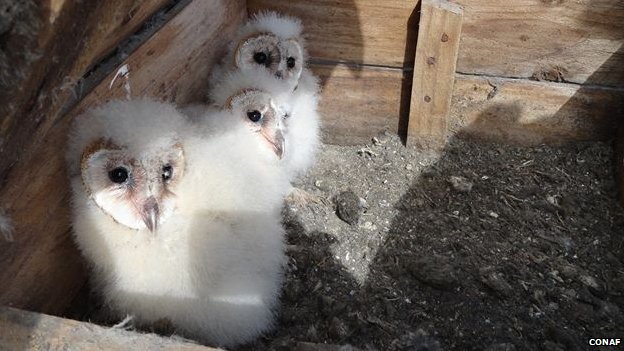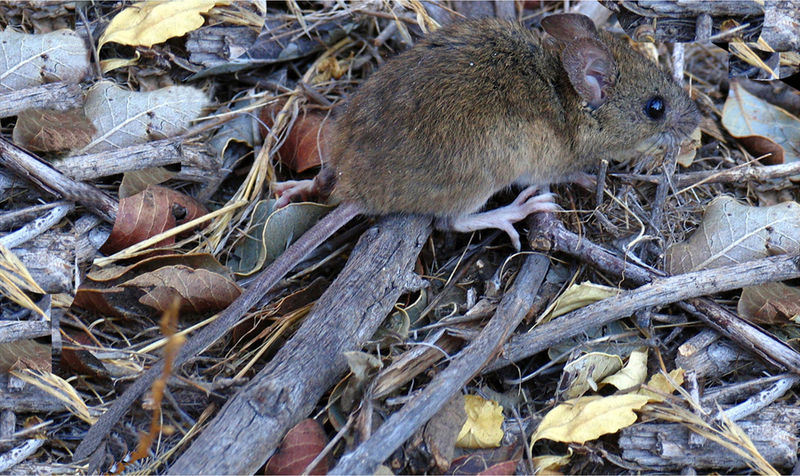
The Chilean forest service, CONAF, are hoping to expand populations of Chilean white owls and Magellanic horned owls in the Valparaíso region in an effort to increase predation on rodents and consequently reduce the risk of Hantavirus infection to people.
Hantaviruses are single stranded RNA viruses in the family Bunyaviridae. They cause long-term, asymptomatic, infections in rodent reservoirs, and people become infected via the inhalation of aerosolised rodent excreta (urine, faeces, saliva). Numerous Hantavirus species have been identified and are distributed throughout the New World and the Old World. Infection with hantaviruses may result in two separate clinical syndromes; Haemorrhagic Fever with Renal Syndrome (HFRS) and Hantavirus Pulmonary Syndrome (HPS). HFRS is endemic in Europe and Asia with approximately 150-200,000 cases per year and a case fatality rate of between <1-12% depending on the infecting species. HPS occurs in the Americas and while this disease is less common, with approximately 200 cases per year, the disease is more severe with a CFR of up to 40%. Since September 2013, there have been 32 cases of Hantavirus in Chile with 15 deaths (CFR 47%).

The rodent reservoir of Hantavirus in Chile is the long-tailed pygmy rice rat, Oligoryzomys longicaudatus. Hantavirus prevalence and the human risk of infection have been linked to a number of factors including rodent population dynamics, habitat use, climate and small mammal diversity. It has also been suggested that recent wildfires in the country have caused rice rats to encroach more often on human settlements, resulting in a recent upsurge in the disease. Summer campers and those living in rural areas are more at risk of exposure as rodents enter accommodation to seek out food and shelter and consequently deposit infective excreta.
In an attempt to reduce numbers of rice rats and therefore reduce the risk of infection to people, the Chilean forest service have been encouraging Chilean white owls and Magellanic horned owls to breed in the Valparaíso region, a natural foci of Hantavirus infection. Since 2002 they have been placing nest boxes in the area, providing habitat for these owls to reproduce and monthly censuses have revealed that up to 30 chicks are produced a year that then disperse into neighbouring regions. As the owls’ diet consists mainly of rodents it is expected that increasing the abundance and distribution of these owls in the area will help to reduce the abundance of rice rats. A previous study that provided nest boxes for barn owls in the area boosted owl numbers and led to a reduction in the abundance of small mammals and a similar effect will likely be observed with the Chilean white owls and Magellanic horned owls. However, results are not always clear-cut, in Belgium the numbers of breeding pairs of barn owls showed a positive relationship with the numbers of Hantavirus cases suggesting that both Hantavirus cases and owl numbers were related to rodent abundance but that increasing owl numbers did not reduce Hantavirus cases. It may be intuitive to think that more predators will equal fewer rodents and reduced disease risk but complex interactions can occur. For example, if predators only remove those individuals that would ordinarily have died from disease or starvation then their impact would be minimal, similarly if rodent populations are primarily driven by food availability rather than predation then the impact of predators may be trivial. In addition, for disease transmission to occur rodents must deposit excreta in places where humans may come in contact with it and any reduction in rodent populations due to predation would have to be sufficient to reduce or stop rodents entering houses. Specialist predators may also cause predator-prey cycles with rodent populations following “boom and bust” cycles which can lead to human disease outbreaks when rodent numbers are high. Hopefully the project will be a success and we are able to see conclusive data on the effect of these owls on small mammal populations and Hantavirus risk in the near future.

Comments